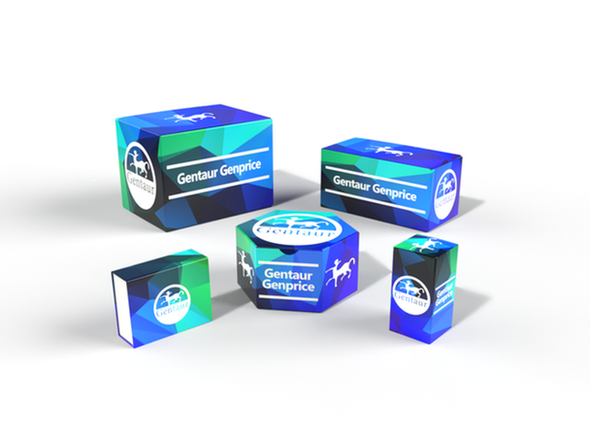749
Mouse Proteoglycan 3 (PRG3) ELISA Kit | KTE70682
- SKU:
- 749-KTE70682
- Availability:
- Usually ships in 5 working days
Description
Mouse Proteoglycan 3 (PRG3) ELISA Kit | KTE70682 | Gentaur UK, US & Europe Distribution
Application: This Mouse Proteoglycan 3 (PRG3) ELISA Kit employs a two-site sandwich ELISA to quantitate PRG3 in samples. An antibody specific for PRG3 has been pre-coated onto a microplate. Standards and samples are pipetted into the wells and anyPRG3 present is bound by the immobilized antibody. After removing any unbound substances, a biotin-conjugated antibody specific for PRG3 is added to the wells. After washing, Streptavidin conjugated Horseradish Peroxidase (HRP) is added to the wells. Following a wash to remove any unbound avidin-enzyme reagent, a substrate solution is added to the wells and color develops in proportion to the amount of PRG3 bound in the initial step. The color development is stopped and the intensity of the color is measured.
Detection Method: Colorimetric
Conjugate: N/A
Sample Type: Cell culture supernatants#Serum#Plasma#Other biological fluids
Assay Type: Multiple steps standard sandwich ELISA assay with a working time of 3-5 hours. It depends on the experience of the operation person.
Kit Component: • Mouse Proteoglycan 3 microplate
• Mouse Proteoglycan 3 standard
• Mouse Proteoglycan 3 detect antibody
• Streptavidin-HRP
• Standard diluent
• Assay buffer
• HRP substrate
• Stop solution
• Wash buffer
• Plate covers
Features & Benefits: Mouse Proteoglycan 3 (PRG3) ELISA Kit has high sensitivity and excellent specificity for detection of Mouse PRG3. No significant cross-reactivity or interference between Mouse PRG3 and analogues was observed.
Calibration Range: Please inquire
Limit Of Detection: Please inquire
Usage Note: • Do not mix components from different kit lots or use reagents beyond the kit expiration date.
• Allow all reagents to warm to room temperature for at least 30 minutes before opening.
• Pre-rinse the pipet tip with reagent, use fresh pipet tips for each sample, standard and reagent to avoid contamination.
• Unused wells must be kept desiccated at 4 °C in the sealed bag provided.
• Mix Thoroughly is very important for the result. It is recommended using low frequency oscillator or slight hand shaking every 10 minutes.
• It is recommended that all samples and standards be assayed in duplicate or triplicate.
Storage Instruction: The unopened kit should be stored at 2 - 8°C. After opening, please store refer to protocols.
Shipping: Gel pack with blue ice.
Precaution The product listed herein is for research use only and is not intended for use in human or clinical diagnosis. Suggested applications of our products are not recommendations to use our products in violation of any patent or as a license. We cannot be responsible for patent infringements or other violations that may occur with the use of this product.
Background: Through large-scale sequencing, Plager et al. (1999) identified PRG3 as one of several transcripts upregulated in umbilical cord precursor cells following stimulation with interleukin-5. Using this sequence as probe, Plager et al. (2001) cloned PRG3 from a phage genomic library of placental tissues. Plager et al. (1999) found that the cDNA sequence predicts a mature 117-amino acid protein with a prepro- region of 108 amino acids. PRG3 shares 49% amino acid sequence identity with PRG2. RT-PCR demonstrated that PRG3 is expressed exclusively in bone marrow. Protein purified from eosinophil granules showed a molecular mass of 13.4 kD.Plager et al. (1999) found that the biologic activity of PRG3 is similar to that of PRG2 in cell killing and in neutrophil and basophil stimulation assays, but usually with reduced potency.
Alternative Names: PRG3; MBP2; MBPH; MGC126662; MGC141971; prepro-major basic protein homolog
Search name: PRG3; MBP2; MBPH; MGC126662; MGC141971; prepro-major basic protein homolog
Tag: PRG3










